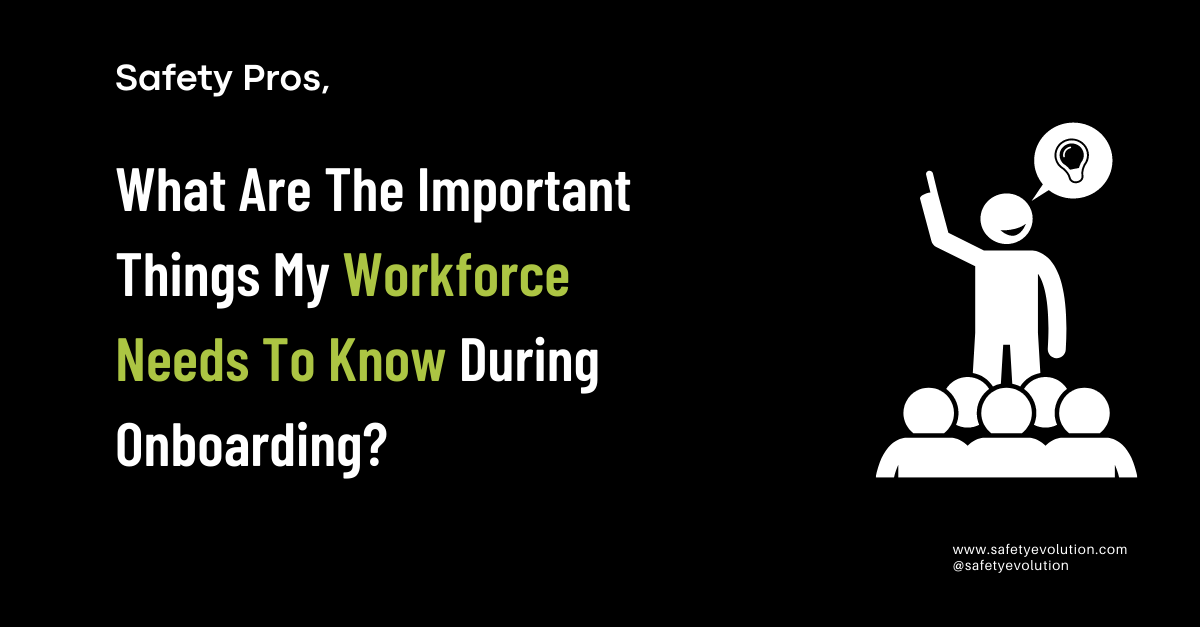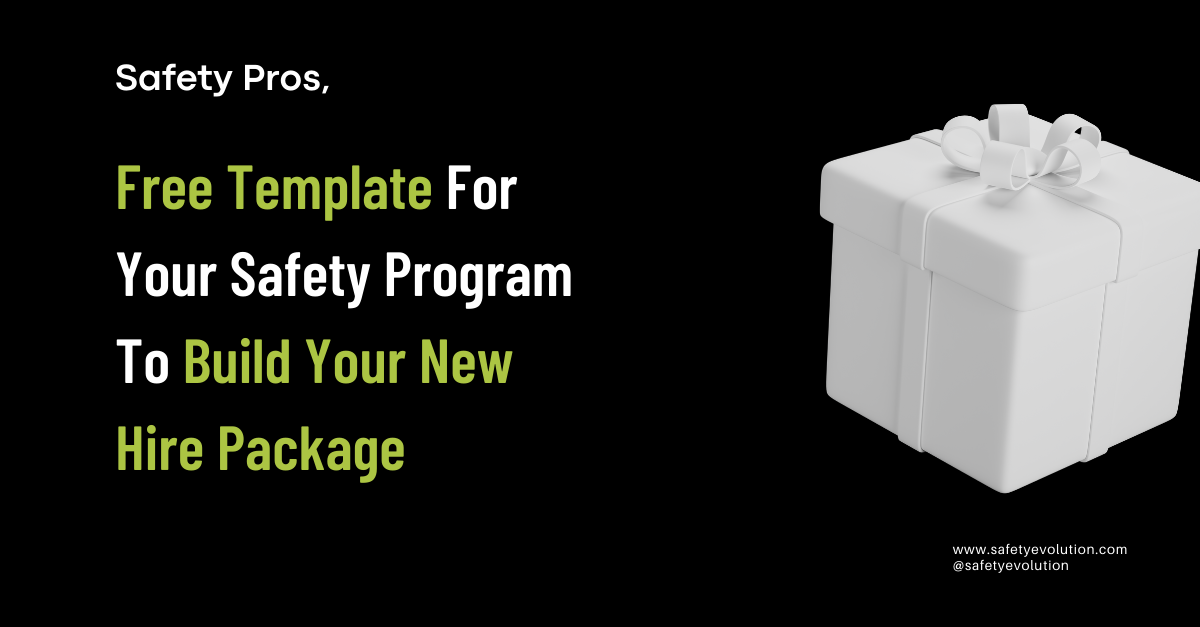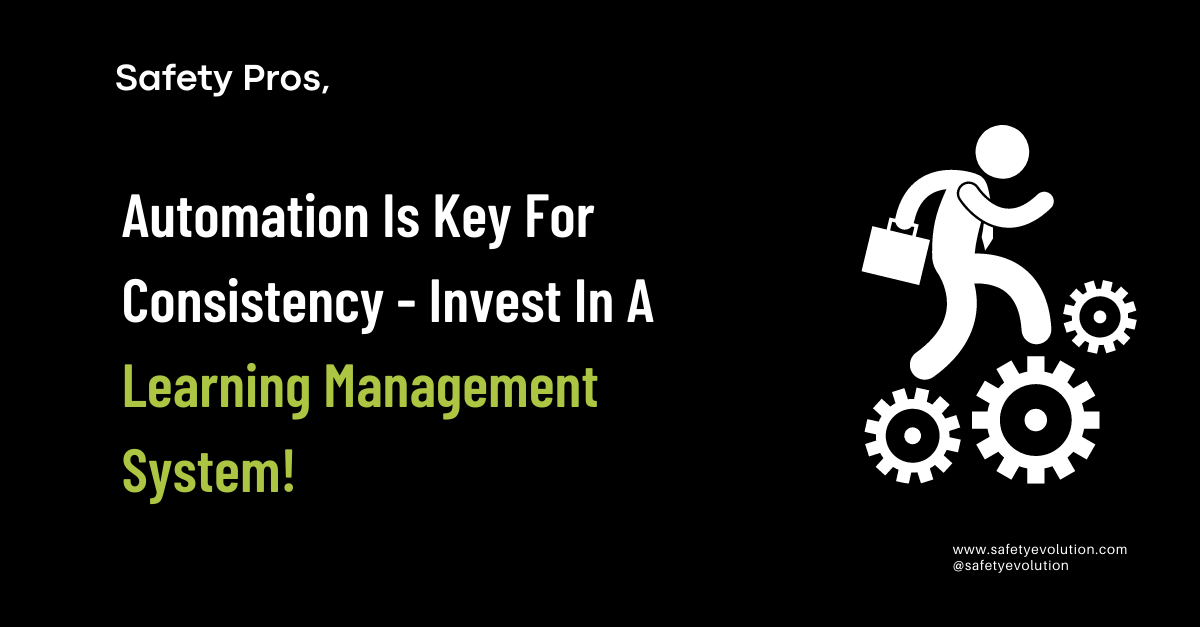EHS professionals are always striving for the seemingly unattainable goal…the Incident Free Workplace! We are constantly assessing our incident rates and examining the causal factors. So, why then, are your incident and injury rates still high?
There is often a common thread that leads back to the lack of new employee training. Don’t make assumptions that a worker, even a tradesperson, has more experience than they really do! Workers may not know what to expect on the worksite. Regardless of past experience, it is entirely possible that a worker is not familiar with the unique hazards associated with a new location.
We know it is vital to get all the necessary information to new employees before they start at the Jobsite. Here are five tips from EHS professionals who have actually made this happen to help you build a successful Onboarding and Safety Orientation program. First, let’s look carefully at the “WHYs”.

Why Is It Important For Companies To Have A Consistent New Employees Onboarding Plan?
You may have begun reading our blog because you are concerned about rising incident rates at your job site. Or perhaps you have an unchanging rate or type of incidents and are looking for a way to successfully reduce these. A consistent new employee onboarding plan will definitely impact this problem and improve safety on your worksite. While the safety of workers is our prime focus, having an effective New Employee Onboarding and Safety Orientation Plan in place has value beyond the obvious.
Ensuring that employees are onboarded and orientated successfully is part of fulfilling your company's obligation to a worker’s “right to know”. Exhibiting a commitment to the rights of workers creates engagement and a positive working relationship with your new employees right out of the gate. In the longer term, research shows that with thorough and consistent orientation, staff turnover is reduced, productivity increases and employee morale gets a great boost.
When new employees see that safety training is part of a company’s focus right from the start, it becomes easier to get “Buy-in” for the day-to-day safety procedures and new safety initiatives. Our job as EHS professionals gets way easier, too!

Start With A Plan! What Are The Important Things My Workforce Needs To Know?
Taking the time to develop your New Employee Onboarding and Safety Orientation program is definitely worth it! So where do you start? Getting a detailed plan in place is the first step. It’s time for you to take a long hard look at the important things.
Begin by listing the day-to-day task at your workplace. Look beyond the Critical Tasks and include those that seem less dangerous. Remember, the tasks that are the most repetitive or involve fewer hazards can breed complacency, a common causal factor for incidents and injury! Don’t forget the small things!
Are there tasks that are uniquely site-specific or only put certain employees at risk? Be sure to include these in the general orientation so that all your workers are aware. Address the hazards related to the presence of multiple trades and identify the tasks being performed by other workers and equipment on the worksite.
Take a close look at past incidents. Ask yourself questions. What corrective actions were created? How will including past incidents and corrective actions add to your safety orientation? How does the “story” behind actual incidents connect workers to potential hazards? How can you use the addition of a “real experience” to emphasize the importance of safe work practices and procedures?

Build Out Your New Employees Orientation & Training Plan - Aim For Consistency
Content and consistency are the keys to building your plan. Make your Safety Orientation interesting! Of course, you will want to include all the pertinent information, but also remember the importance and impact of “the real story”! Relating your experiences gives credibility to you as an EHS professional and presenter. Don’t miss the value of changing things up by involving new employees in some short activities. Including input from your management team or having an experienced supervisor can help to hold everyone’s attention.
Start by making a Safety Orientation Checklist
- Use the outline you created from reviewing tasks, incidents, and safe work practices and procedures.
- Rights of the Worker as well the responsibilities of workers, supervisors, and management.
- Include site-specific information such as the Emergency Response Plan and important contact numbers. Include members of the Joint Health and Safety Committee or Safety Representative
- First Aid
- Expand on your company rules so workers understand the intent.
- Identify worksite hazards and the controls. These may include:
- Working at heights and the type of fall protection used
- Ladder use
- Excavations
- Exposure to overhead powerlines
- Stored energy and Lock-out Tag-out
- hazardous materials or chemicals on-site and the protective measures in place. WHMIS
- Working alone
- Required and specialized PPE
- Address your company’s policies and programs that deal with Workplace Violence and Harassment as well as Substance Abuse.
- Clearly define the disciplinary actions that result from infractions
- Schedule and assign site-specific or task-specific training as required for the location.
Build a Safety Orientation Quiz
Keep the safety orientation quiz as simple and comprehensive as possible. You may want to set up the Safety Orientation so that a few short questions are answered as each segment is completed rather than one longer quiz at the end. Engaging the new employee is of prime importance, so take advantage of the shift in focus that a safety orientation quiz offers.
Developing a way of documenting the new employee's safety orientation is the third component. The safety orientation quiz should be filed including the safety orientation quiz answers. You may want to build an in-house Safety Orientation Certificate to be distributed upon completion. Be sure to record each new employees Safety Orientation in your training matrix.
Once you have the material in place, take time to “present” the Safety Orientation a few times so that you are confident and the event flows smoothly.
The work that you have put into your company’s Worker Safety Orientation will have long-term and far-reaching benefits. Well done!

Free Safety Orientation Template for Your Safety Program To Build Your New Employees Training Package
Safety Evolution has provided an invaluable resource for those putting together a New Employees Onboarding and Safety Orientation program. Tips and templates found in our New Hire package are great if you are wanting to expand or cross-check the material you already are using for training new workers.
In this Safety Orientation package you will find:
-
Safety Orientation Powerpoint ( PPT )
-
Safety Orientation Checklist
-
Safety Orientation Quiz
-
Safety Orientation Quiz Answers
-
Training Matrix
The link below will give you access to this Free Download Package for developing the content of your New Employees Training, Onboarding and Safety Orientation.


Automation Is Key For Consistency - Invest In a Learning Management System!
Now that you have done the work to develop the content for your New Employee Onboarding and Safety Orientation, how are you going to ensure consistency? Setting up presentation space, printing material, handling and marking quizzes, and ensuring certificates are received make In-person, paper-based methods cumbersome and time-consuming.
What is your solution? Here is how we can help!
The value of automation with the use of a Learning Management System should never be underrated! At Safety Evolution, we provide:
- New Employees have access to the Safety Orientation & Safety Orientation Quiz from their own dashboard.
- Create Custom Courses and have access to additional courses such as WHMIS, TDG, Ground Disturbance, and many more
- Automated pass or fail of Safety Orientation & custom courses based on your criteria. Never grade another quiz again!
- System generated certificates with your logo, trainer signatures, worker signatures and other custom details upon completion
- Autogenerated uploading & recording of completed courses in the supplied Training Matrix.
- EHS personnel, supervisors and management have immediate access to all employee training, certificates and courses in real-time.
These tools are a small part of the functions of the Safety Evolution Software. In addition, our EHS Software provides digitized forms for hazard assessments, safety meetings, inspections and investigations for the day-to-day operation of your EHS Management system. Assets are tracked, and analytics are populated in real-time. Management and supervisors are able to quickly view safety on all worksites. Completed forms are automatically saved in your company’s databank on your software.
We at Safety Evolution Safety Software would be delighted to connect with you to assess your Safety “Pain Points” and show you how our EHS software will provide you with pain-free safety! Book In for your Free Safety Assessment today!

Key “takeaways”:
Sign up to receive our weekly newsletter with helpful safety content below!